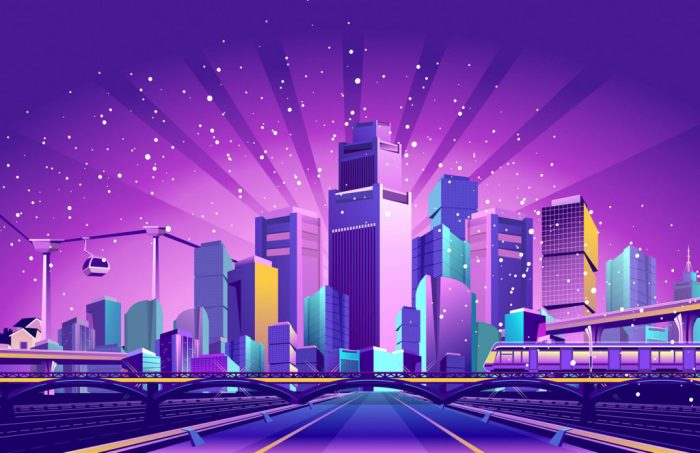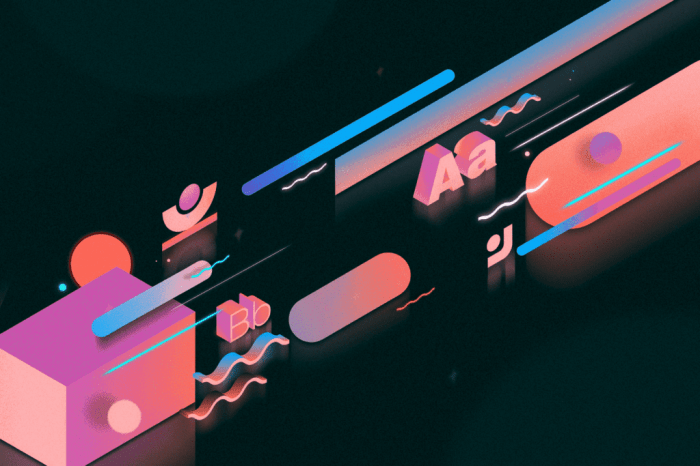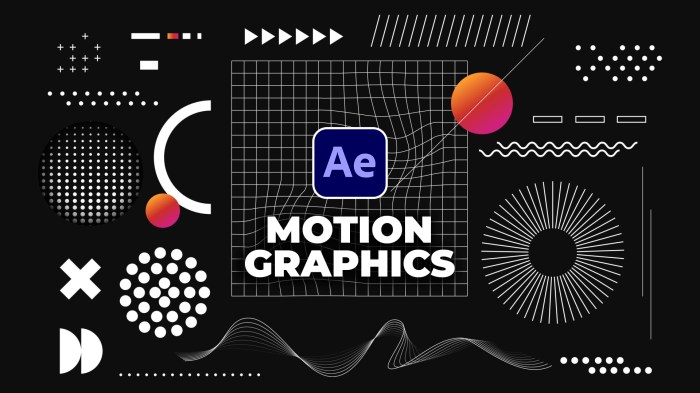Unveiling the World of Motion Graphics
Step into the captivating realm of motion graphics where creativity knows no bounds. From dynamic animations to stunning visuals, this innovative art form is revolutionizing the way we communicate and engage with audiences.
Delve deeper into the intricacies of motion graphics as we unravel its definition, principles, tools, techniques, and trends in this comprehensive guide.
Definition of Motion Graphics
Motion graphics refer to animated graphic design elements that bring visual content to life through movement. They combine graphic design, animation, and video to create engaging visuals that communicate messages effectively.
Elements of Motion Graphics
Motion graphics typically include elements such as typography, shapes, colors, textures, and transitions. These elements are carefully crafted and animated to convey information, evoke emotions, and enhance storytelling in a dynamic and captivating way.
Popular Applications of Motion Graphics
- In Advertising: Motion graphics are frequently used in advertising campaigns to create eye-catching visuals that promote products or services.
- In Film and Television: Motion graphics are utilized in film titles, TV show intros, and visual effects to enhance storytelling and captivate audiences.
- In User Interface Design: Motion graphics are integrated into user interfaces to provide feedback, guide users, and create seamless interactions.
- In Educational Videos: Motion graphics are employed in educational videos to explain complex concepts, engage learners, and simplify information.
Principles of Motion Graphics
Motion graphics design relies on several key principles to create visually appealing and engaging animations. Understanding these principles is crucial for effective communication through motion graphics.Timing and Spacing:Effective timing and spacing are essential in creating impactful motion graphics. The speed at which elements move on the screen and the distance between these elements play a significant role in capturing the viewer's attention.
Proper timing and spacing help maintain a smooth flow of animation, keeping the audience engaged throughout the visual storytelling process.Color, Typography, and Composition:Color, typography, and composition are powerful tools in motion graphics design. The strategic use of color can evoke emotions and convey messages, while typography helps in enhancing readability and visual hierarchy.
Additionally, thoughtful composition ensures that all elements within the animation are arranged harmoniously, guiding the viewer's eye seamlessly through the content.
Importance of Color in Motion Graphics
Color in motion graphics is more than just aesthetics; it plays a vital role in setting the mood and tone of the animation. The color palette chosen can evoke specific emotions and create a cohesive visual identity for the project.
Understanding color theory and its impact on the audience is key to creating effective and engaging motion graphics.
Typography Best Practices for Motion Graphics
Typography in motion graphics involves selecting appropriate fonts, sizes, and styles to enhance readability and reinforce the message being communicated. Consistency in typography throughout the animation helps in maintaining a cohesive look and feel. By paying attention to typography details, motion graphic designers can effectively convey information and enhance the overall visual experience.
Composition Techniques for Motion Graphics
Composition in motion graphics refers to how elements are arranged within the frame to create a visually pleasing and balanced layout. Using techniques such as the rule of thirds, leading lines, and symmetry can help draw the viewer's attention to key elements and guide the narrative flow of the animation.
Thoughtful composition ensures that the audience remains focused on the intended message without distractions.
Tools and Software for Motion Graphics

Creating captivating motion graphics requires the use of specialized tools and software that enable designers to bring their ideas to life. These tools offer a wide range of features and capabilities to enhance the visual appeal and storytelling of motion graphics projects.
Common Tools and Software
- Adobe After Effects: A popular choice among motion graphic designers, After Effects offers a wide range of tools for creating animations, visual effects, and compositing.
- Maxon Cinema 4D: Known for its powerful 3D modeling and animation capabilities, Cinema 4D is often used in conjunction with After Effects for creating complex motion graphics.
- Apple Motion: Ideal for Mac users, Apple Motion provides tools for creating titles, transitions, and effects for motion graphics projects.
- Blender: An open-source 3D creation suite that includes tools for modeling, animation, and rendering, making it a versatile option for motion graphics design.
Comparing Software Options
When choosing the right tool for a motion graphics project, it's essential to consider the specific requirements of the project. Adobe After Effects is widely used for its comprehensive features and integration with other Adobe Creative Cloud apps
Blender, as an open-source option, provides flexibility and customization for designers looking to experiment with different techniques.
Tips for Selecting the Right Tool
When selecting a software for motion graphics design, consider factors such as the complexity of the project, familiarity with the software, and the budget available. It's important to choose a tool that aligns with your skill level and project requirements to ensure a successful outcome.
Additionally, exploring tutorials and online resources can help you master the chosen software and make the most of its features for your motion graphics projects.
Techniques for Creating Motion Graphics

Motion graphics involve a variety of animation techniques to bring visual elements to life. Understanding these techniques is crucial in creating engaging and effective motion graphics.
Storyboarding and Animatics
Storyboarding is a crucial step in the motion graphics creation process. It involves sketching out the sequence of scenes to visualize how the animation will flow. Animatics, on the other hand, are rough animated versions of the storyboard, helping to refine timing and pacing before the final animation is created.
Integration of Audio and Visual Elements
Effective integration of audio and visual elements is key to creating impactful motion graphics. Sound effects, music, and voiceovers can enhance the overall viewer experience and convey the intended message more effectively. By syncing audio and visual elements seamlessly, motion graphics can evoke emotions and capture the audience's attention more effectively.
Trends in Motion Graphics
As technology continues to advance, the field of motion graphics design is constantly evolving. Let's explore some of the current trends shaping the world of motion graphics.
Virtual Reality Integration
Virtual reality (VR) has been making waves in the world of motion graphics, allowing for immersive and interactive experiences. Designers are now incorporating VR elements into their projects to create engaging content.
3D Animation and Illustration
The use of 3D animation and illustration in motion graphics has become increasingly popular. This trend adds depth and realism to designs, making visuals more dynamic and captivating.
Minimalistic Design Approach
A minimalist design approach has gained traction in motion graphics, focusing on simplicity and clean aesthetics. This trend emphasizes the use of negative space and limited color palettes to convey messages effectively.
Integration of Live Action Footage
Combining live-action footage with motion graphics has become a prevalent trend in recent projects. This integration creates a seamless blend of real-life elements with animated graphics, enhancing storytelling and visual impact.
End of Discussion

As we draw the curtains on our exploration of motion graphics, remember that the power of visual storytelling knows no limits. Embrace the dynamic nature of motion graphics and unleash your creativity to captivate and inspire your audience.
FAQ Summary
What are motion graphics?
Motion graphics are animated elements or digital footage used to create the illusion of motion or rotation. They are often used in multimedia projects, advertising, and entertainment.
How important is timing in creating engaging motion graphics?
Timing is crucial in creating engaging motion graphics as it dictates the flow and rhythm of animations, enhancing the overall impact on viewers.
What software is commonly used for creating motion graphics?
Popular software for creating motion graphics includes Adobe After Effects, Cinema 4D, and Blender, each offering unique features for animation and design.
What are some current trends in motion graphics design?
Current trends in motion graphics design include 3D animations, augmented reality integration, and interactive storytelling techniques to create immersive visual experiences.




